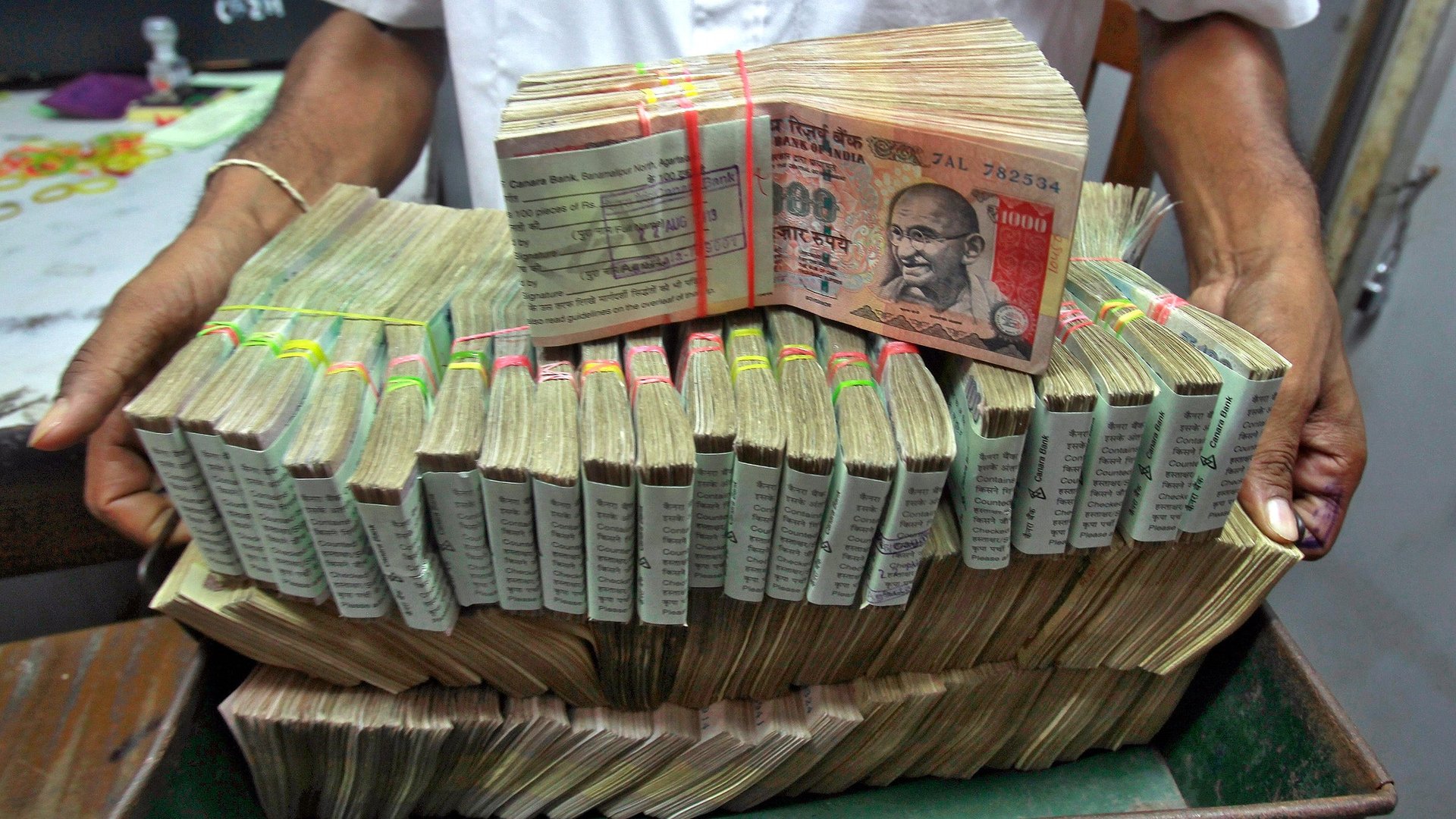The BRICS tried to bring a knife to a currency shootout
Nervy about capital outflows that are devaluing their currencies, the big emerging markets at the G20 have come up with a strategy: A $100 billion crisis fund to help their central banks defend their exchange rates.


Nervy about capital outflows that are devaluing their currencies, the big emerging markets at the G20 have come up with a strategy: A $100 billion crisis fund to help their central banks defend their exchange rates.
The fund (originally intended to be more than twice as large and come together much sooner than the 2014 target date) will mostly come from China ($41 billion), along with Brazil, India and Russia ($18 billion each) and South Africa ($5 billion).
Here’s the problem: It probably isn’t enough. In the face of a widespread sell-off of emerging-market assets, China sold $20 billion in US dollar reserves in July alone. India has already spent nearly $20 billion of its foreign-currency reserves this year attempting to slow the depreciation of the rupee; Russia’s reserves are down $30 billion; and South Africa has already spent $3 billion this year. And the worst is yet to come, because what caused investors to pull their money out of those countries was merely the expectation that the US would start tightening its monetary policy this year. When that happens, which won’t be until mid-September at the earliest, expect the flood of capital outflows to turn into a tsunami.
The problem facing emerging markets is, economists assure us, not as bad as it was in the nineties, when currency meltdowns turned into debt crises. Instead of borrowing lots of money in dollars and defending currency pegs, as they did then, countries like India, Indonesia and South Africa are now borrowing less, doing it in their own currencies, and allowing those currencies to float against the market. That should allow them an easier time weathering the storm.
But—and there’s always a but—the exit of foreign capital, and the measures emerging markets will take in response, could lead to slower growth at a time when many emerging markets are already hurting. Interest-rate hikes might keep foreign capital from leaving, and stop the rising inflation that usually follows a falling currency; but they could hurt domestic businesses. The same is true of measures to slow public borrowing, like tax hikes or spending cuts. And if the big emerging markets have slow growth, those repercussions will be felt around the world.
Spending foreign reserves is an easy panacea—until they run out. One way emerging markets avoid this is a foreign-exchange swap—essentially, they lend a rich-country central bank or a multinational corporation some of their reserves in exchange for an equivalent amount of their own currency. That has the effect of preserving, say, the rupee-dollar exchange rate without actually spending foreign-currency reserves, at least at first. But it has risks too—it can lead to significant losses if advanced economies do continue on what many see as an inevitable path to tighter money.
Hence the currency reserve pool the BRICS have just proposed. But aside from its being probably too small, it’s also not clear how strong the solidarity is between Russia and China—which export more than they import—and the others, which are running current-account deficits. China and Russia’s representatives at the G20 meeting chided India, currently in the toughest fight, for failing to adopt internal economic reforms that would make it less vulnerable to shocks like these.